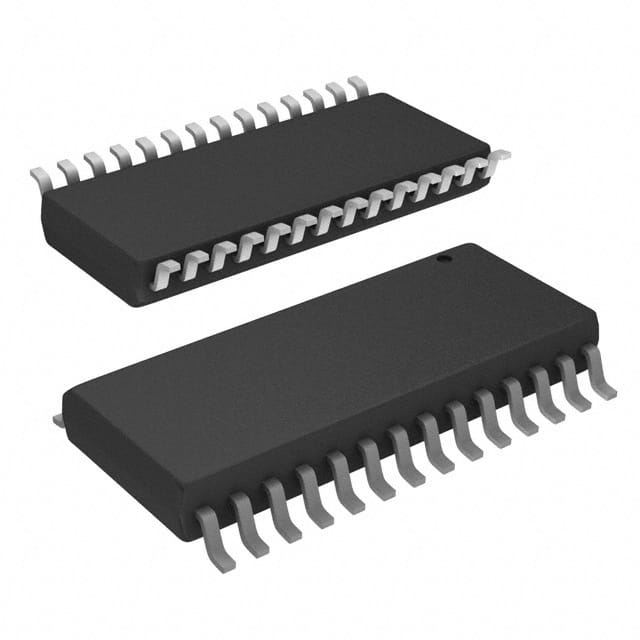Xem thông số kỹ thuật để biết chi tiết sản phẩm.

TRS3237ECDWR
Overview
Category: Integrated Circuit (IC)
Use: Serial Converter/Transceiver
Characteristics: - High-speed, low-power RS-232 transceiver - Supports data rates up to 1 Mbps - Operates from a single 3.3V power supply - Compatible with various microcontrollers and processors - Provides ±15kV ESD protection on transmitter outputs and receiver inputs
Package: SOIC-16
Essence: The TRS3237ECDWR is a high-performance RS-232 transceiver designed for serial communication applications.
Packaging/Quantity: The TRS3237ECDWR is available in tape and reel packaging, with 2500 units per reel.
Specifications
- Supply Voltage Range: 3V to 5.5V
- Data Rate: Up to 1 Mbps
- Number of Channels: 2
- Operating Temperature Range: -40°C to +85°C
- ESD Protection: ±15kV (Human Body Model)
- Package Type: SOIC-16
Pin Configuration
The TRS3237ECDWR has a total of 16 pins, which are assigned as follows:
- VCC
- GND
- RIN1 (Receiver Input 1)
- ROUT1 (Receiver Output 1)
- CTS1 (Clear To Send 1)
- RTS1 (Request To Send 1)
- DSR1 (Data Set Ready 1)
- DCD1 (Data Carrier Detect 1)
- RI1 (Ring Indicator 1)
- RIN2 (Receiver Input 2)
- ROUT2 (Receiver Output 2)
- CTS2 (Clear To Send 2)
- RTS2 (Request To Send 2)
- DSR2 (Data Set Ready 2)
- DCD2 (Data Carrier Detect 2)
- RI2 (Ring Indicator 2)
Functional Features
- High-speed RS-232 communication
- Low power consumption
- ESD protection for robust operation
- Dual-channel design for versatile applications
- Wide operating voltage range for compatibility with various systems
Advantages and Disadvantages
Advantages: - High data rate support - Low power consumption - ESD protection for reliability - Versatile dual-channel design
Disadvantages: - Limited to RS-232 communication only - Requires external level shifting for interfacing with other standards
Working Principles
The TRS3237ECDWR operates based on the RS-232 standard, which defines the electrical characteristics of serial communication. It uses voltage levels to represent binary data, with positive voltages indicating logic 0 and negative voltages indicating logic 1. The transceiver converts the logic levels between the RS-232 standard and the internal logic levels of the connected microcontroller or processor.
Detailed Application Field Plans
The TRS3237ECDWR is commonly used in various applications that require reliable serial communication, such as: - Industrial automation systems - Embedded systems - Networking equipment - Point-of-sale terminals - Medical devices - Test and measurement instruments
Alternative Models
Here are some alternative models that can be considered as alternatives to the TRS3237ECDWR:
- MAX3232ECDWR: Similar RS-232 transceiver with enhanced ESD protection.
- SP3232EEN-L/TR: Low-power RS-232 transceiver with extended temperature range.
- LTC2874IDD#PBF: Multi-protocol transceiver supporting RS-232, RS-485, and RS-422 standards.
These alternative models offer similar functionality and can be used as replacements depending on specific requirements.
In conclusion, the TRS3237ECDWR is a high-speed RS-232 transceiver that provides reliable serial communication in various applications. With its low power consumption, ESD protection, and dual-channel design, it offers a versatile solution for interfacing with RS-232 devices.
Liệt kê 10 câu hỏi và câu trả lời thường gặp liên quan đến ứng dụng TRS3237ECDWR trong giải pháp kỹ thuật
Sure! Here are 10 common questions and answers related to the application of TRS3237ECDWR in technical solutions:
Q: What is TRS3237ECDWR? A: TRS3237ECDWR is a high-speed, low-power RS-232 transceiver IC used for serial communication in various technical applications.
Q: What voltage levels does TRS3237ECDWR support? A: TRS3237ECDWR supports both 3.3V and 5V voltage levels, making it compatible with a wide range of systems.
Q: Can TRS3237ECDWR be used for both transmitting and receiving data? A: Yes, TRS3237ECDWR can be used for both transmitting and receiving data over an RS-232 interface.
Q: What is the maximum data rate supported by TRS3237ECDWR? A: TRS3237ECDWR supports data rates up to 1 Mbps, making it suitable for high-speed serial communication.
Q: Is TRS3237ECDWR compatible with different types of microcontrollers? A: Yes, TRS3237ECDWR is compatible with various microcontrollers, including popular ones like Arduino and Raspberry Pi.
Q: Does TRS3237ECDWR require external components for operation? A: TRS3237ECDWR requires minimal external components, such as capacitors and resistors, for proper operation.
Q: Can TRS3237ECDWR handle long-distance communication? A: TRS3237ECDWR has a built-in line driver/receiver that allows it to handle communication over long distances, typically up to 50 feet.
Q: Is TRS3237ECDWR suitable for industrial applications? A: Yes, TRS3237ECDWR is designed to meet the requirements of industrial applications, including robustness and noise immunity.
Q: Can TRS3237ECDWR be used in battery-powered devices? A: Yes, TRS3237ECDWR has low power consumption, making it suitable for battery-powered devices where power efficiency is crucial.
Q: Are there any application notes or reference designs available for TRS3237ECDWR? A: Yes, the manufacturer provides application notes and reference designs that can help users integrate TRS3237ECDWR into their technical solutions efficiently.
Please note that these answers are general and may vary depending on specific implementation details and requirements.

